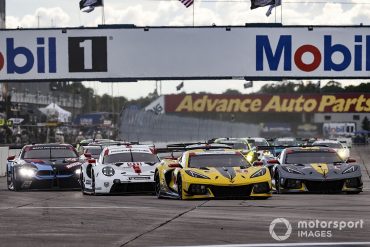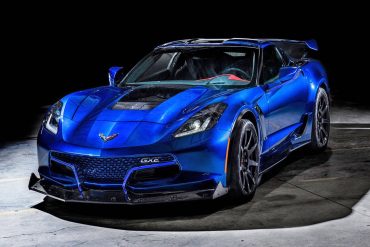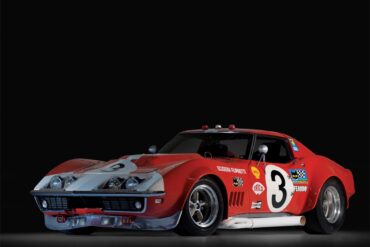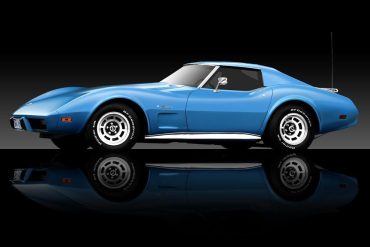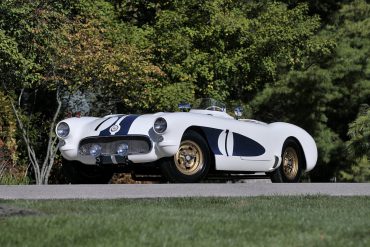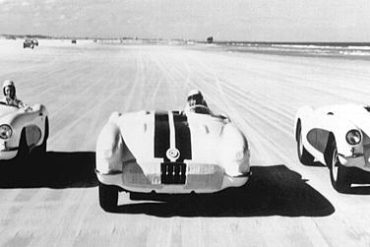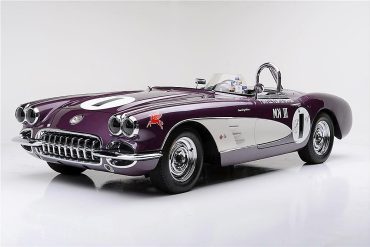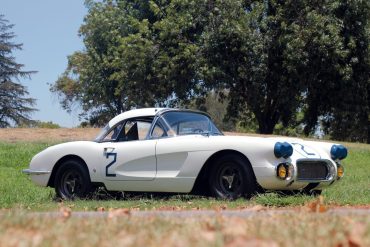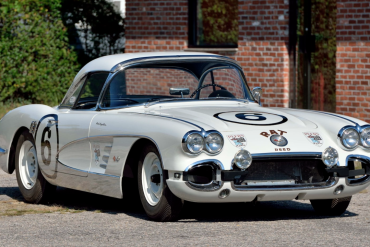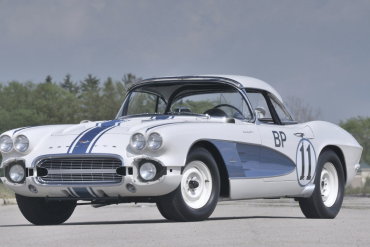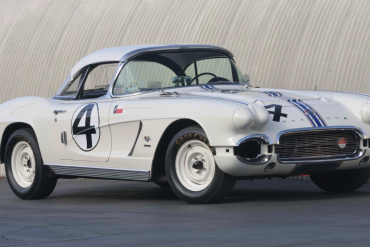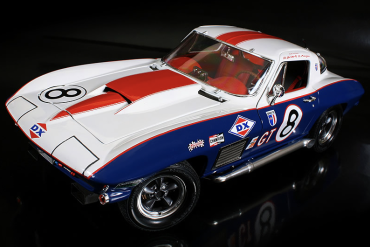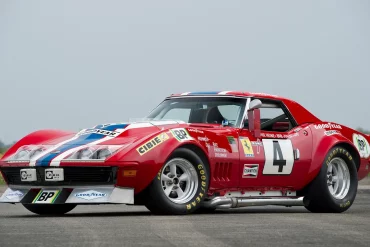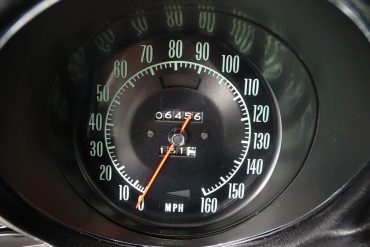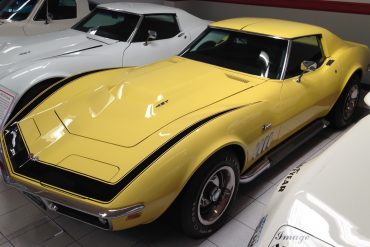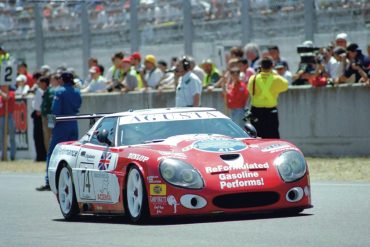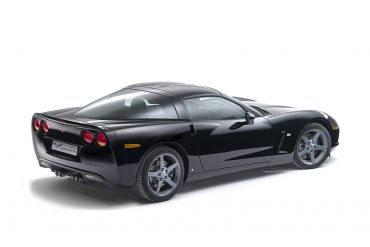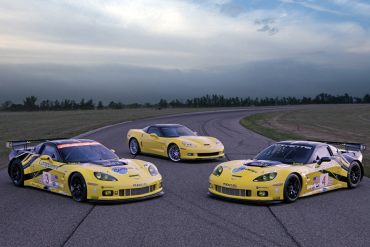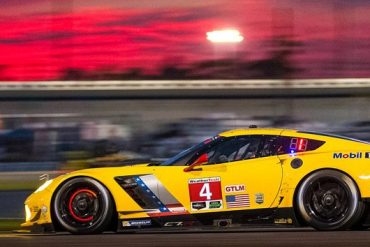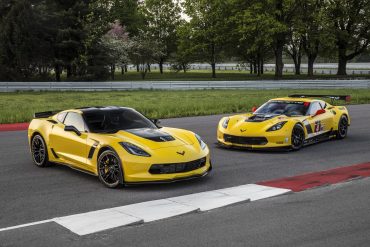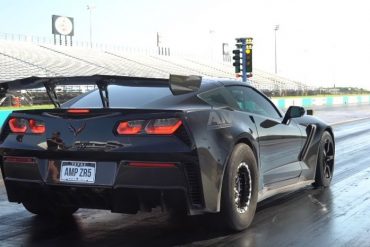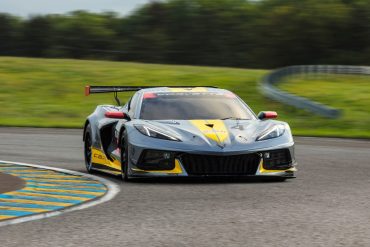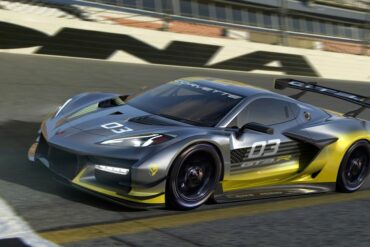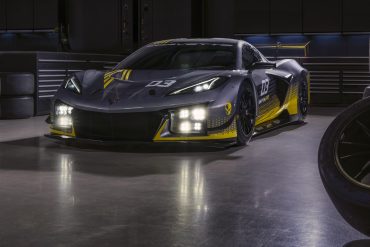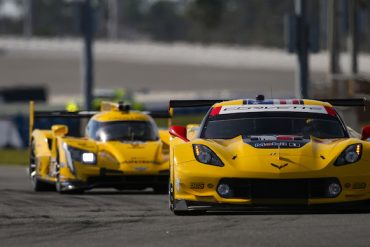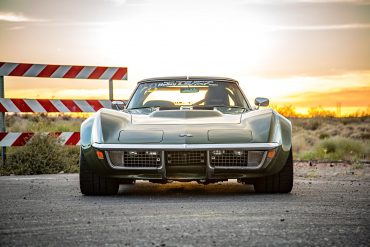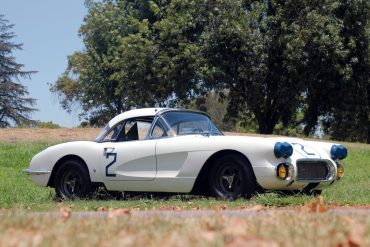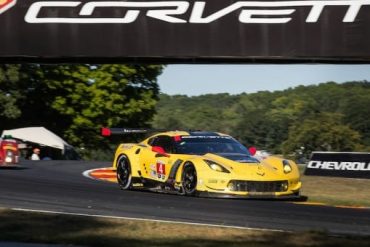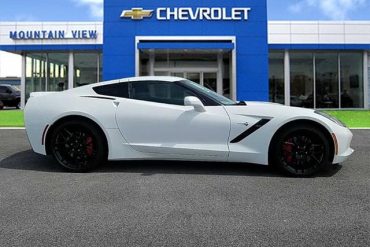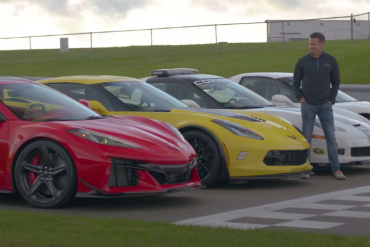Corvette Racing at Road America: Another 1-2 Finish for the C8.R Corvette Race Teams! While there has been a lot...
Some Cool Corvette Racing Records That Surprised Even Us It’s no secret that the Corvette has achieved more than its...
Our Favorite Corvette Racing Highlights Over The Decades Without exception, the Corvette has proved itself a valid contender on the...
Corvette Records You Probably Didn’t Know About The Corvette has made more history than perhaps any other domestic performance vehicle...
In 1956, Ed Cole, then General Manager of Chevrolet, decided Corvette could be saved from extinction due to lagging sales by promoting the car as a performance car which could be raced in production classes. The first of these Corvettes was to debut at Daytona Beach for acceleration and top end speed trials, the 12 hour race at Sebring, and also possibly Le Mans.
Duntov started off with a ‘54 Corvette as his test mule. He knew that accomplishing his goal would require two things: more power and improved aerodynamics. First, he removed the stock windshield and built a small windscreen. A tonneau cover was then added to the passenger side, and a fairing with a long fin was added to the rear deck behind the driver’s head.
The Purple People Eater MKIII is a 1959 Corvette that was literally unbeatable in SCCA B-Production racing in the late 1950s. There were three Purple People Eaters built in 1958 and 1959. The 1959 model, won every race it entered, except the last one, with Jim Jeffords behind the wheel and mechanic Ronnie Kaplan turning wrenches. The car was built by a team at Nickey Chevrolet in Chicago.
The story of the Corvette and how it came to race at Le Mans is one in which the dreams of a number of individuals intersect, over a prolonged period of time. While each of these dreamers came from vastly different backgrounds and held often times very different agendas, they all shared a common vision—an American sports car winning the 24 Hours of Le Mans. For Le Mans, the Sebring #2 car was renumbered as #1.
Known as the “Race Rat,” this rare 1960 Corvette is one of just 10 produced by the factory with the LPO (Limited Production Option) 1625A 24-gallon fuel tank designed by Zora Arkus-Duntov for racing purposes to reduce the frequency of pit stops. A true factory-prepared race car, this 1960 Chevrolet Corvette Tanker was ordered by gentleman racer and businessman George Reed of “Reed’s Race Rats” fame to compete in 1960 Sebring 12 Hours.
This 1961 Chevrolet Corvette factory race car possesses a host of rare options and a provenance worthy of the velvet rope treatment at any of the world’s finest auto museums or vintage races. Gulf Oil sponsored and driven to an SCCA B-Production national championship by the likes of Dr. Dick “The Flying Dentist” Thompson and Don Yenko, it stands as one the most successful and important production-based Corvette race cars ever constructed.
Always on the hunt for greater speed and greater thrills, Delmo decided to replace the '61 he had been racing with a brand-new 1962 Chevy Corvette. Owing to his demonstrated skill behind the wheel and prior successes with Corvettes, Delmo had a close relationship with legendary chief engineer Zora Arkus-Duntov and enlisted his assistance with the new car. "It was easy," Delmo recalls. "I called Zora and said, 'Build me a race car.' The only other thing I said was to make it white."
At Sebring in 1967, the Corvette L88 made its debut appearance. The L88 package included many competition components which included a M22 transmission, large disc brakes, upgraded suspension and an alumunim head 427. Shortly after the race, the L88 option would be offered on production cars which was a formidable package.
The Corvette L88 Scuderia Filipinetti Le Mans Racer holds a significant place in Corvette's racing history. With a coil spring front suspension and an L88 engine prepped by Zora Arkus-Duntov and smuggled out the back door to circumvent GM's ban on racing, the L88 was driven at the 1968 24 Hours of Le Mans by Henri Greder and Umberto Maglioli. It dominated the Porsches and led the GT class til 6th hour when carburetion problems melted a piston.
Automotive history is full of outlandish tales and shenanigans, many of which would be hard to believe if the fine...
In 1969, Chevrolet changed the perception of Corvette forever by introducing the ultra-powerful ZL-1 Corvette with a 427 CI engine producing 585 horsepower! The 1969 ZL-1 Corvette came equipped with an entirely new big-block engine option that produced more horsepower than any Corvette that had come before it. Any Corvette, when ordered with RPO ZL1, came fitted with an all-aluminum 427 C.I. engine that featured a dry-sump oil system and which weight approximately 100 pounds less.
Although my passion and love of motor racing was born in Italy—at Monza during the 1969 Italian GP—my first real...
To celebrate the success of the Corvette Racing program, especially at the prestigious 24 Hours of Le Mans race, Chevrolet made the decision to manufacture a limited number of special-edition Corvettes that would be sold exclusively in Europe. This special-edition car was limited to just 250 units and marketed to European consumers as the Victory Edition Corvette.
The C6.R ZR1 GT2, if you were to use its full name, was the model used in the last four years before the Corvette C7.R was introduced, and had a slick sequential manual operated by paddles that was combined with the rear differential to create a rear transaxle. This style of transaxle eventually made it into the road-going Corvette, especially the Grand Sport and ZR1 of the C7 generation.
The C7.R Corvette by Pratt & Miller is one of the winningest race cars in modern history. Explore what makes this Corvette a winner on race day, and discover the connection between the C7.R and the seventh-generation Chevy Corvette Z06. At the core of the C7.R Corvette is a direct carry-over from its predecessor - the same 5.5 liter engine that was developed during the C6.R's successful tenure in both the American Le Mans series and at The 24 Hours of Le Mans.
The 2016 Corvette Z06 C7.R Edition is a road-going, track-capable homage to the Corvette Racing C7.R racecars. It’s offered in Corvette Racing’s signature yellow livery – or black – with coordinated exterior and interior accents. Only 500 examples of the C7.R Edition were built and all included the Z07 Performance Package with carbon ceramic brakes, as well as a specially serialized vehicle identification number. Corvette special editions don't get more fun than this.
A Corvette ZR1 Built By Advanced Modern Performance Runs a Boost-Only 8.57 Quarter-mile This “Track Missle” Corvette Sets the Bar...
Chevrolet begins a new chapter in its storied racing legacy with the introduction of the new mid-engine Corvette race car, known as the C8.R. The C8.R will be Chevrolet’s first mid-engine race car to compete in IMSA’s GTLM class and the first clean sheet race car design since the C5.R debuted in 1999. It will make its racing debut at Rolex 24 at Daytona on Jan. 25, 2020. The C8.R is based on the strong foundation of the 2020 Corvette Stingray.
Blurring the Lines Between the Road and the Racetrack – the 2024 Corvette Z06 GT3.R When GM announced they’d be...
Designed for the 2024 racing season to compete in the GT3 category, Corvette Z06 GT3.R will soon join a family of long-standing victors on the track. This track-only race car will be the first that Chevrolet offers to both pro and amateur teams. Although based on the design of the street-friendly Corvette Z06 and its 5.5L engine, the GT3.R won’t be street legal. The track-only race car will be modified with racing-specific equipment and will comply with FIA regulations.
Heavy Rain and Electrical Problems Caused Issues for Corvette Racing – But Did Not Keep Them From Finishing! DAYTONA BEACH,...
Garrett Randall has been into cars since the age of 13, as he explains in the video below. It started...
Photo: Casey Annis The story of the Corvette and how it came to race at Le Mans is one in...
CORVETTE RACING AT ROAD AMERICA Milner, Gavin place second in GTLM; Garcia, Magnussen finish third in tight championship ELKHART LAKE,...
Do You Get More For Your Money When You Purchase a European Sports Car? In a word, NO! We’ve all...
Thanks to HorsePower Obsessed for bringing us this amazing comparison video, showing the C8Z06 taking on all previous Z06 generations. ...


